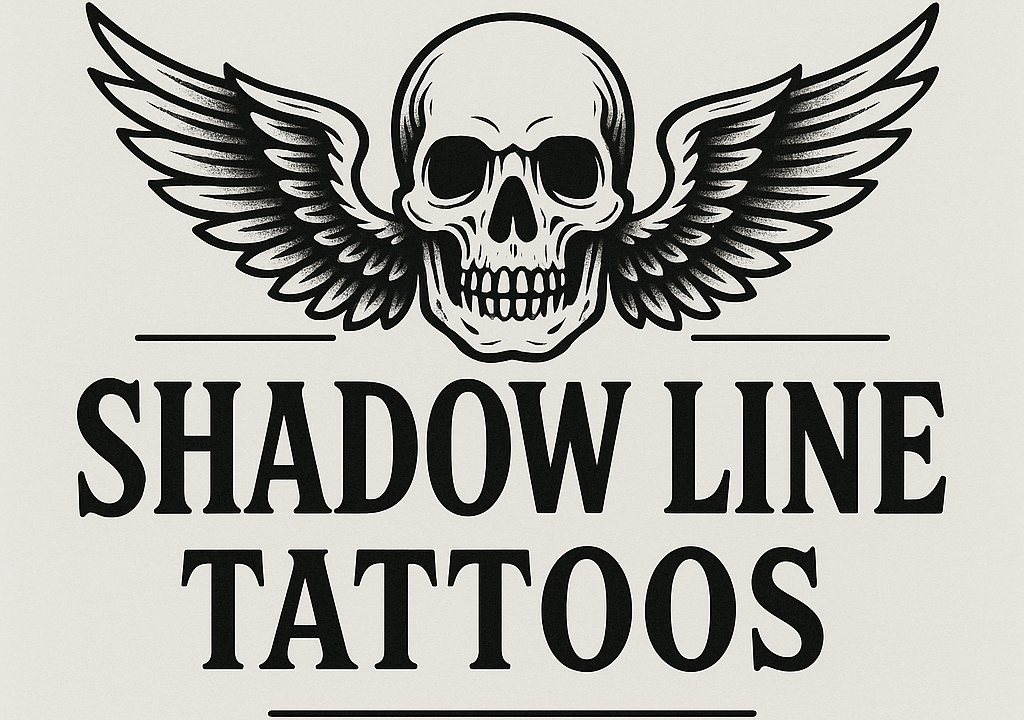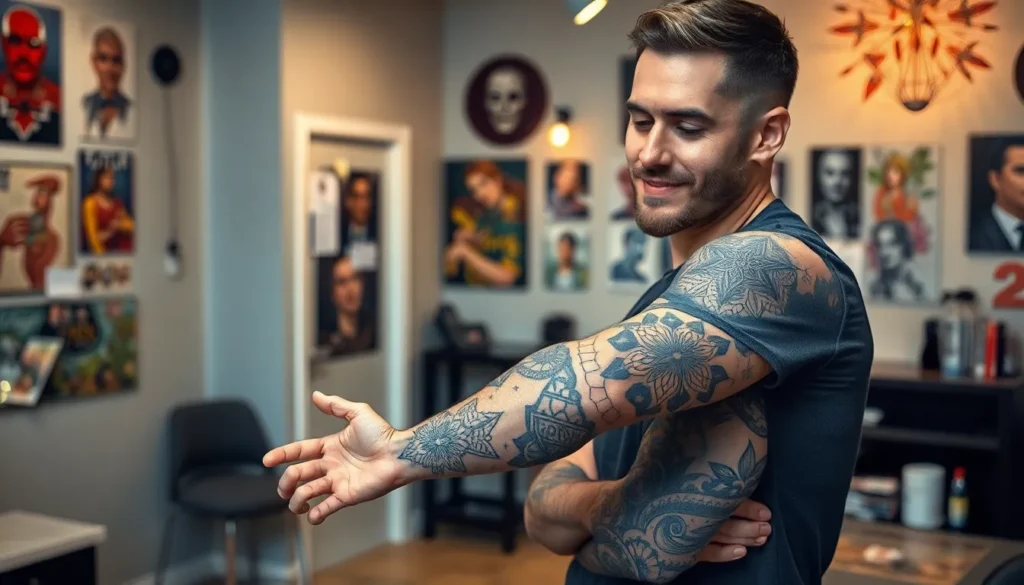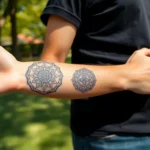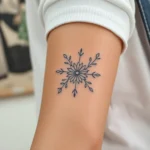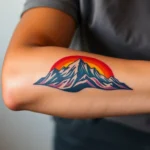We’ve all been there – staring at that old tattoo that no longer represents who we are today. Whether it’s an ex’s name, a design that didn’t age well, or simply artwork that no longer fits your style, you’re not stuck with it forever. Cover-up tattoos offer the perfect solution to transform your regrettable ink into something you’ll actually love showing off.
The art of covering tattoos has evolved dramatically over the years. Today’s skilled artists can work magic with darker pigments, creative designs, and strategic placement to completely mask your unwanted tattoo. From bold tribal patterns to intricate realistic portraits, the possibilities are virtually endless when you know what works best for your exact situation.
We’ll explore the most effective cover-up tattoo ideas specifically designed for men, helping you understand what styles work best over different types of existing tattoos. Get ready to discover how the right design can turn your biggest tattoo regret into your favorite piece of body art.
Classic Geometric Patterns for Masculine Cover-Ups
Geometric patterns offer powerful answers for covering unwanted tattoos while creating bold, masculine designs. These angular shapes and structured patterns naturally draw attention away from underlying artwork through their strong visual impact.
Bold Tribal Designs
Tribal patterns excel at covering old tattoos with their thick black lines and solid fill areas that effectively mask previous ink. We recommend these designs for men who want to transform faded script or small symbols into commanding body art that commands respect.
Modern tribal interpretations blend traditional Polynesian motifs with contemporary geometric elements like sharp angles and interconnected patterns. These updated versions work particularly well on shoulders, upper arms, and chest areas where older tattoos often fade or stretch over time.
Coverage effectiveness reaches its peak with tribal designs because artists can strategically place the boldest elements directly over problematic areas of your original tattoo. The flowing nature of tribal work allows for creative adaptation around existing shapes while maintaining the pattern’s integrity.
Mandala and Sacred Geometry
Mandala designs provide exceptional coverage through their circular patterns and intricate detail work that naturally obscures underlying tattoos. We’ve seen remarkable transformations where complex mandala artwork completely reimagines chest pieces and back tattoos.
Sacred geometry incorporates mathematical precision with spiritual symbolism, creating covers that appear intentional and meaningful rather than corrective. Popular elements include the Flower of Life, hexagonal patterns, and interconnected circles that form mesmerizing visual layers.
Shading techniques within geometric mandala work allow artists to vary ink density strategically, placing darker sections over more visible parts of your old tattoo. This approach ensures seamless integration while maintaining the mandala’s balanced aesthetic appeal.
Geometric Sleeve Extensions
Sleeve extensions transform partial arm tattoos into cohesive full sleeve designs using geometric frameworks that incorporate existing artwork. We often see this approach successfully unite mismatched pieces into flowing geometric narratives.
Angular patterns like chevrons, diamonds, and interlocking polygons create natural transition zones between old and new ink. These structured elements provide artists with flexible frameworks for blending different tattoo styles seamlessly.
Negative space utilization within geometric sleeves allows artists to work around lighter portions of existing tattoos while building dramatic contrast through strategic placement of bold shapes. This technique creates depth and movement that draws focus away from covered elements.
Nature-Inspired Cover-Up Designs
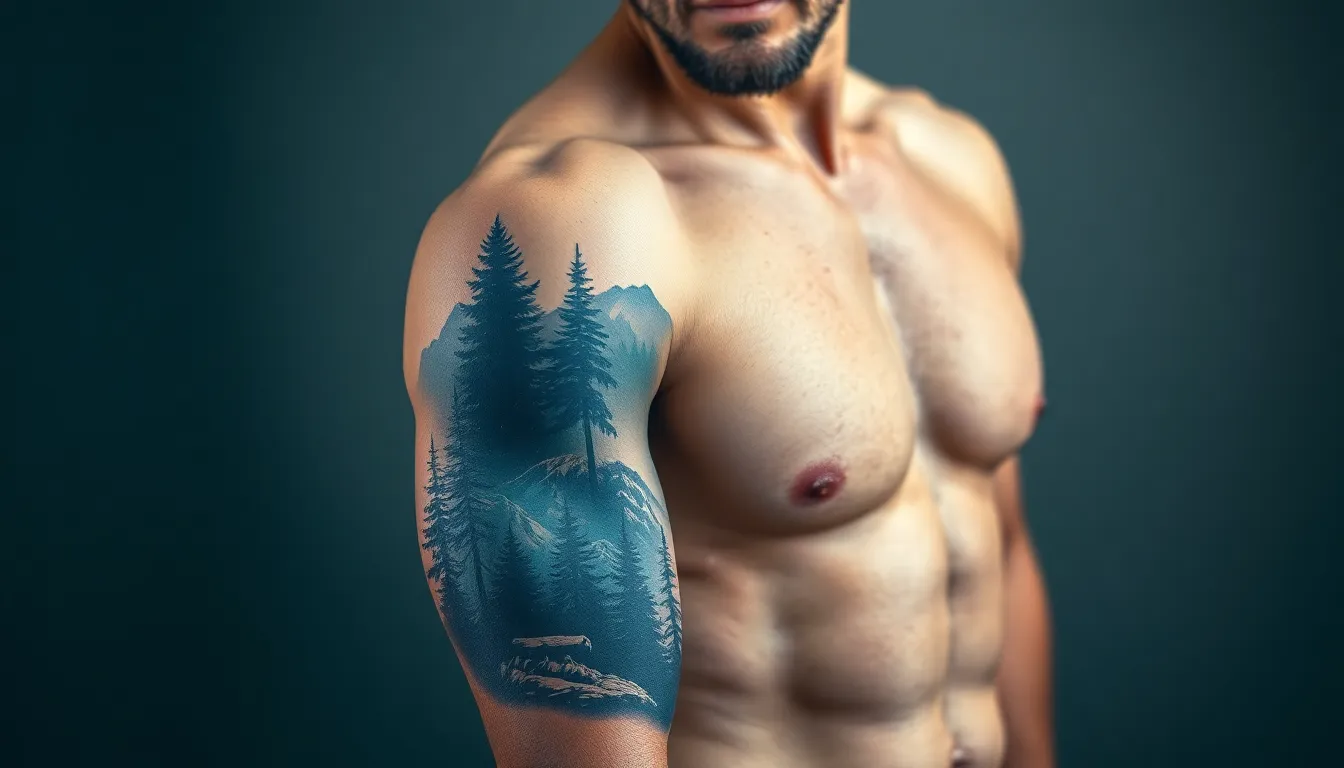
Nature-inspired themes offer exceptional versatility for men’s cover-up tattoos through their complex details and natural shading opportunities. These designs work particularly well because they provide multiple elements that can strategically obscure existing ink while creating visually compelling artwork.
Forest and Mountain Landscapes
Forest landscapes create ideal cover-up opportunities through their dense foliage and layered composition elements. Tree canopies naturally provide dark shadowing that conceals underlying tattoos while rocky outcrops add textural variety to the overall design. Mountain ranges work exceptionally well because their rugged lines and natural depth allow artists to integrate existing ink seamlessly into the industry.
We’ve seen these designs successfully transform everything from small script tattoos to larger tribal pieces. Dense woodland scenes offer multiple hiding spots within bark textures, leaf clusters, and shadow play between trees. Mountain silhouettes create bold focal points that draw attention away from previous artwork while establishing a strong masculine aesthetic.
Ocean Waves and Nautical Themes
Ocean wave designs provide ever-changing movement that naturally redirects the eye from unwanted ink beneath. Wave patterns create flowing lines that can incorporate existing tattoos into their natural rhythm while adding depth through foam details and water textures. Nautical elements like anchors, compasses, and lighthouses serve as strategic focal points that command attention.
Ships sailing through stormy seas offer excellent coverage through their detailed rigging and billowing sails. Marine life additions such as octopi, whales, and sea turtles bring organic shapes that can wrap around problematic areas. These themes work particularly well on arms and shoulders where the natural flow of waves complements body contours.
Wildlife and Animal Portraits
Animal portraits deliver some of the most effective cover-up results through their rich shading and detailed features. Bears, wolves, and panthers provide extensive dark fur textures that completely obscure underlying tattoos while creating powerful masculine imagery. Eagle portraits offer dramatic wing spans and intricate feather work that can transform entire sections of skin.
Large cat faces work exceptionally well because their intense eyes create commanding focal points while whiskers and facial markings provide strategic line work. We recommend these designs for clients wanting bold statement pieces that completely reimagine their existing tattoos. Animal fur patterns naturally incorporate shadow work that makes previous ink virtually invisible within the new design.
Dark and Gothic Cover-Up Options
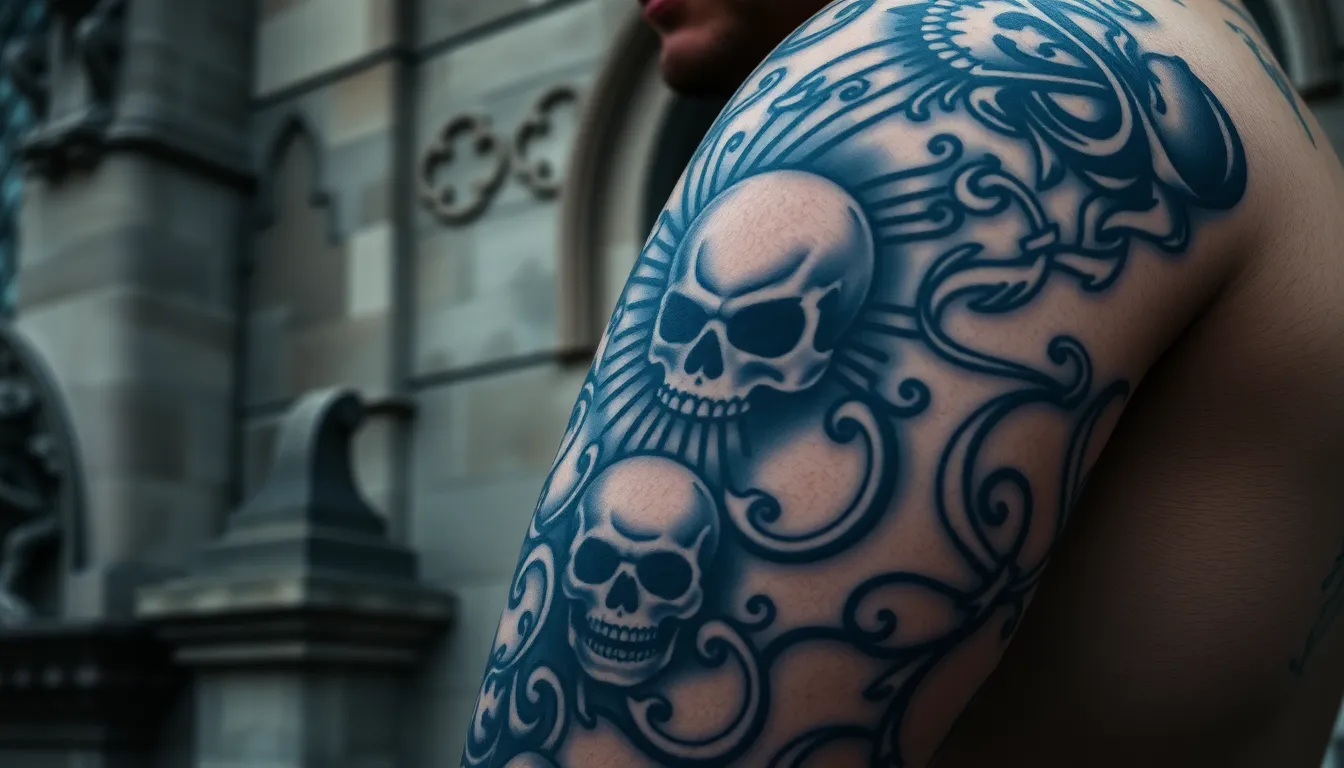
Dark themes offer some of the most effective cover-up answers for men who want to transform unwanted tattoos into striking body art. Gothic designs excel at concealing previous ink through bold contrasts and intricate details that naturally draw the eye away from underlying artwork.
Skull and Skeleton Motifs
Skull designs dominate the cover-up industry due to their intricate shading and bold outlines that effectively mask old tattoos, particularly those high in black or dark ink. Skeleton hands create dramatic focal points while offering flexible placement options across arms, chest, or back areas. Artists frequently combine skulls with roses to add organic elements that help blend the transition between old and new ink.
Bone-themed artwork provides many creative opportunities for customization based on your existing tattoo’s size and location. Full skeleton figures work exceptionally well for larger cover-ups, while individual bone elements can target smaller problem areas. These motifs rely on strong contrast and detailed shading to completely obscure previous designs beneath layers of gothic imagery.
Gothic Architecture Elements
Medieval castle designs transform unwanted tattoos through detailed stonework and architectural precision that naturally conceals underlying ink. Gargoyle figures add dramatic three-dimensional elements while their complex forms provide multiple opportunities to work around existing tattoo placement. Ornate doorways and cathedral windows create vertical compositions that can effectively cover elongated tattoos on arms or legs.
Stone textures and weathered architectural details offer excellent coverage through their varied shading requirements and organic imperfections. Gothic spires and flying buttresses provide structural elements that artists can manipulate to match your exact cover-up needs. These designs customize easily in both size and orientation to harmonize with existing tattoo dimensions.
Dark Fantasy Creatures
Dragon motifs excel at cover-up applications through their flowing shapes, detailed scales, and organic lines that allow precise work around old tattoos. Large, shaded dragons provide particularly effective coverage as their complex anatomy can be manipulated to obscure underlying designs completely. Winged demons offer similar versatility with their expansive forms and intricate feather or membrane details.
Mythical beasts bring supernatural elements that capture attention while masking unwanted ink through their elaborate compositions. Artists can adapt creature proportions and positioning to work with your existing tattoo’s exact challenges. These designs benefit from layered shading techniques and negative space utilization that skilled tattoo artists use to create seamless cover-ups that transform regrettable ink into commanding gothic artwork.
Traditional and Neo-Traditional Styles
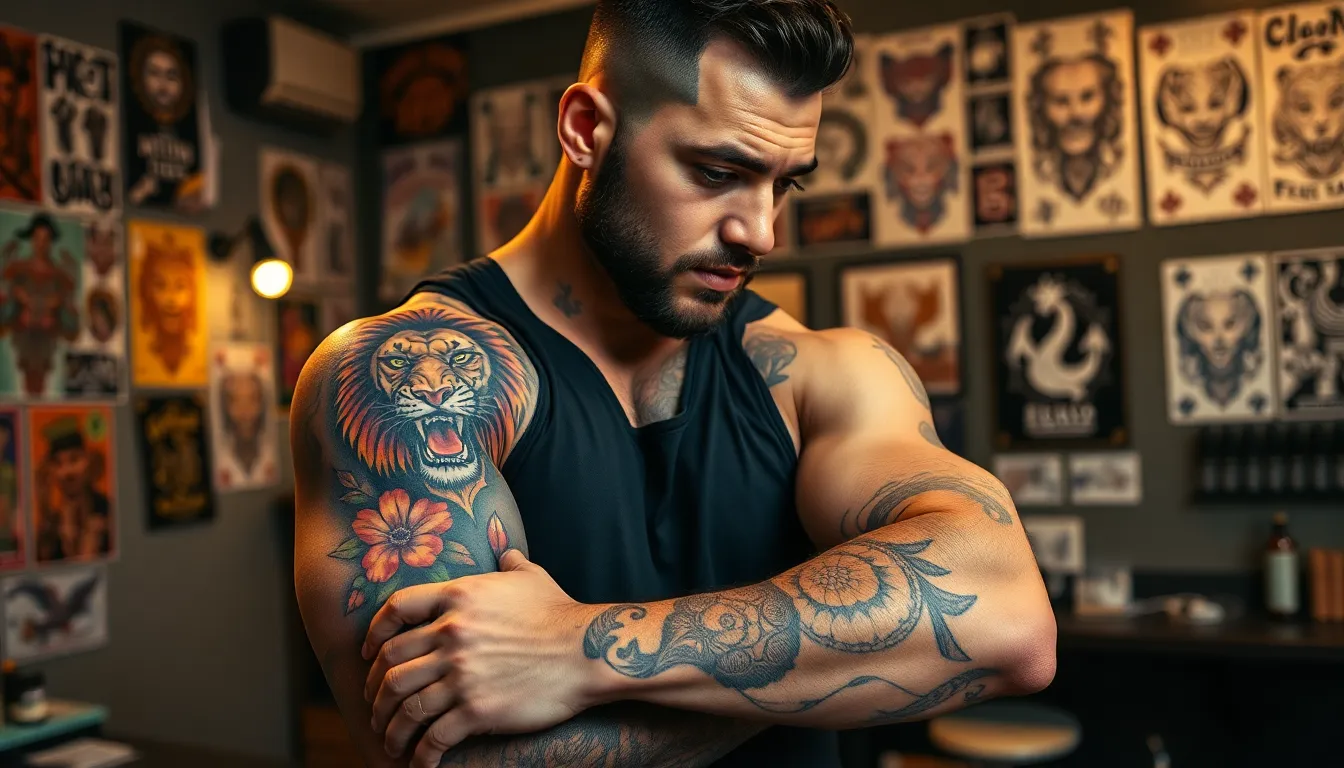
Traditional tattoo styles offer some of the most reliable cover-up answers for men. These time-tested approaches use bold techniques that effectively mask existing artwork.
American Traditional Flash Art
American Traditional Flash Art transforms unwanted tattoos with bold lines and bright colors that command attention. This classic style features iconic imagery like anchors, roses, eagles, and pin-up girls that create strong visual impact. Artists use thick black outlines and solid color fills to completely dominate underlying tattoos.
Bold shading techniques make American Traditional particularly effective for cover-ups. Dark blacks and deep reds provide excellent coverage over faded or lighter existing tattoos. The style’s emphasis on high contrast ensures that old designs disappear beneath the new artwork.
Classic flash designs offer masculine appeal while solving cover-up challenges. Nautical themes like ship wheels and swallows work exceptionally well on arms and shoulders. Military-inspired imagery such as eagles and banners creates powerful statements that completely reimagine previous tattoo mistakes.
Japanese Traditional Irezumi
Japanese Traditional Irezumi provides comprehensive coverage through intricate designs and symbolic storytelling. This ancient art form uses detailed imagery including koi fish, dragons, cherry blossoms, and samurai warriors. Large-scale compositions allow artists to completely transform existing tattoos into cohesive masterpieces.
Full and half sleeves excel at concealing multiple problematic tattoos simultaneously. Traditional Japanese sleeves flow naturally around the arm’s contours while incorporating waves, clouds, and wind bars as connecting elements. These backgrounds effectively hide underlying ink within their complex patterns.
Symbolic meanings add depth to Japanese cover-up tattoos beyond their visual impact. Dragons represent strength and wisdom while koi fish symbolize perseverance through adversity. Phoenix designs particularly resonate with cover-up clients as they represent rebirth and transformation from past mistakes.
Neo-Traditional Color Explosions
Neo-Traditional Color Explosions combine classic techniques with vibrant modern palettes for ever-changing cover-ups. This contemporary style maintains traditional bold outlines while incorporating realistic shading and explosive color schemes. Artists blend multiple bright hues to create eye-catching designs that completely overshadow old tattoos.
Realistic animal portraits dominate neo-traditional cover-up artistry with their rich detail. Lions, wolves, and bears feature intricate fur textures and piercing eyes that captivate viewers. These designs use color gradients and dimensional shading to create depth that makes previous tattoos invisible.
Floral arrangements in neo-traditional style offer surprising masculinity through bold execution. Roses, peonies, and chrysanthemums rendered with dramatic lighting effects create striking cover-ups. Deep purples, rich oranges, and vibrant blues provide the color saturation needed to completely mask underlying artwork while maintaining sophisticated appeal.
Blackwork and Dotwork Cover-Up Solutions
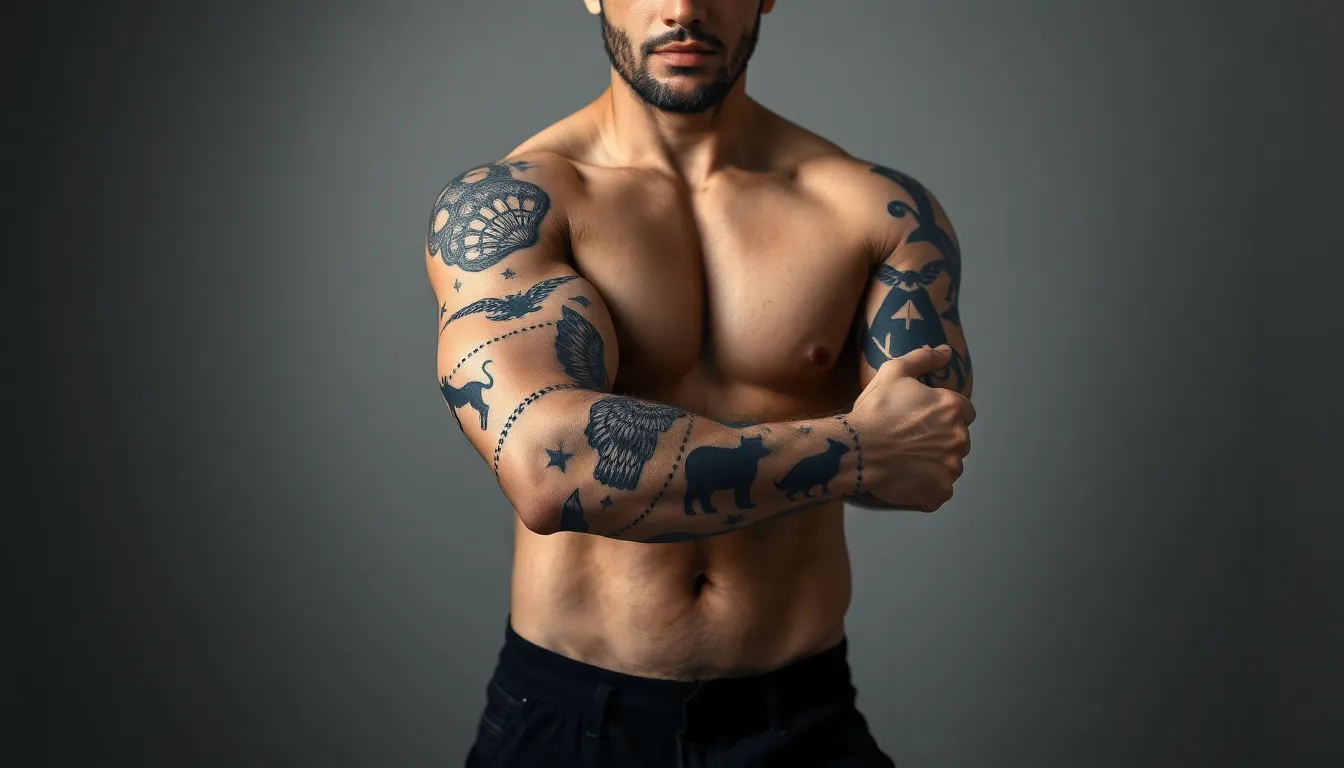
Blackwork and dotwork techniques offer some of the most reliable cover-up answers for men seeking to transform unwanted tattoos. These methods use bold, dark elements that effectively mask existing ink while creating striking new designs.
Solid Black Silhouettes
Solid black silhouettes create powerful cover-ups by using pure black ink to form bold shapes that completely conceal underlying tattoos. Animals like panthers, wolves, and bears work exceptionally well as silhouette designs because their natural forms provide complex outlines that break up old tattoo patterns. We’ve seen fantastic results with eagle silhouettes that spread across shoulder blades, effectively hiding faded tribal work beneath their expansive wings. Mountain ranges and city skylines also make excellent silhouette choices, offering horizontal elements that can stretch across larger areas of unwanted ink. The beauty of silhouette work lies in its simplicity—these designs rely on shape recognition rather than intricate details, making them perfect for covering tattoos with busy or unclear imagery.
Intricate Dotwork Patterns
Intricate dotwork patterns use thousands of carefully placed dots to create stunning visual effects that naturally distract from and cover existing tattoos. Mandala inspired dotwork designs work particularly well for cover-ups because their circular patterns can incorporate irregular shapes from old tattoos into their overall composition. Geometric dotwork creates mesmerizing optical illusions through varying dot densities, with tighter clusters forming darker areas that hide unwanted elements. We recommend combining dotwork with other techniques to maximize coverage—stippled shading around solid elements adds texture while ensuring complete concealment. Sacred geometry patterns using dotwork techniques can transform chaotic old tattoos into meaningful, meditative designs that appear intentionally complex rather than busy.
Blackout Sleeve Transformations
Blackout sleeve transformations represent the ultimate cover-up solution, completely erasing existing tattoos under solid black ink coverage. Full arm blackouts create a dramatic, bold aesthetic that appeals to men seeking a complete fresh start with their body art. Partial blackout techniques can target exact problem areas while leaving space for new designs, creating striking contrast between solid black sections and detailed artwork. We’ve observed that blackout sleeves work exceptionally well when combined with negative space designs—white ink highlights or skin breaks create stunning visual impact against the black background. Strategic blackout placement can also frame new tattoos, using solid black sections to create borders that make fresh artwork pop while completely hiding old, regrettable pieces underneath.
Portrait and Realistic Cover-Ups
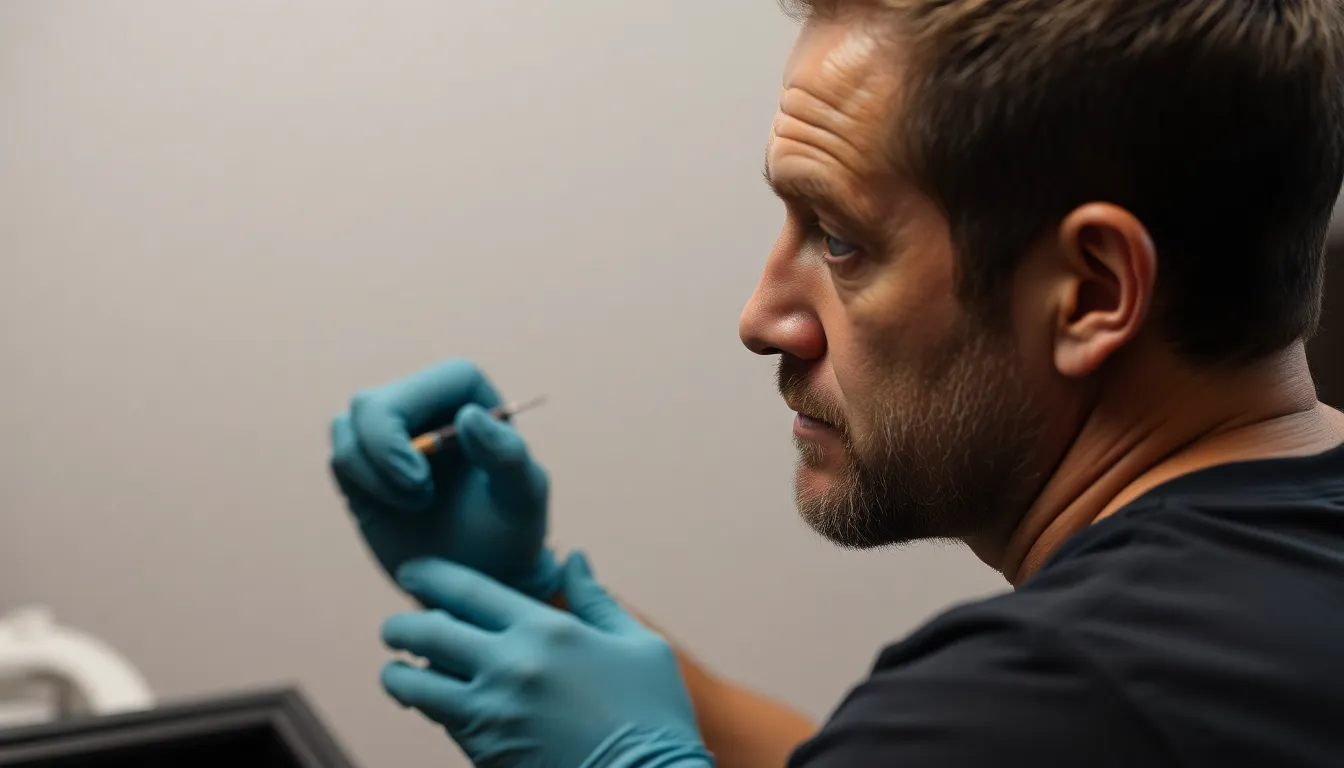
Realistic portrait tattoos offer powerful transformation opportunities for men seeking meaningful cover-up answers. These detailed designs use sophisticated shading techniques and precise linework to completely mask underlying tattoos while creating deeply personal artwork.
Family Member Portraits
Family member portraits transform unwanted ink into touching tributes that honor our loved ones. Professional tattoo artists use realistic shading and fine line techniques to capture facial features, expressions, and emotional depth that completely conceal previous tattoos. Children’s faces, parents’ portraits, and grandparent commemorations work exceptionally well for cover-ups because they require extensive detail work that naturally masks underlying designs.
We’ve seen remarkable transformations where faded tribal pieces become stunning portraits of fathers, or old script tattoos disappear beneath detailed mother portraits. The emotional connection to family imagery makes these cover-ups particularly meaningful, turning regrettable ink into cherished memories we’ll proudly display forever.
Celebrity and Icon Tributes
Celebrity and icon tributes offer unique cover-up opportunities that express our admiration while concealing unwanted tattoos. Musicians like Johnny Cash or Jimi Hendrix work excellently for cover-ups due to their distinctive facial features and the artistic freedom they provide for creative shading. Sports legends, movie stars, and cultural icons can be adapted to fit over existing tattoos while maintaining their recognizable characteristics.
These tributes work best when the artist incorporates elements from the celebrity’s career or personality into the design. Rock stars can include musical instruments or stage elements, while athletes might feature sports equipment or team colors that help blend the cover-up seamlessly with the original tattoo placement.
Historical Figure Commemorations
Historical figure commemorations create powerful cover-up tattoos that honor important people while completely transforming unwanted ink. Presidents like Abraham Lincoln or George Washington offer excellent coverage potential through their distinctive features and the opportunity to include patriotic elements. Military leaders, philosophers, and revolutionary figures provide rich detail opportunities that effectively mask underlying tattoos.
We recommend incorporating historical elements like period clothing, weapons, or symbolic backgrounds that enhance the cover-up’s effectiveness. Civil War generals can include battle scenes, while ancient philosophers might feature scrolls or classical architecture that helps blend the new design with the existing tattoo’s shape and size.
Sleeve and Large-Scale Cover-Up Ideas
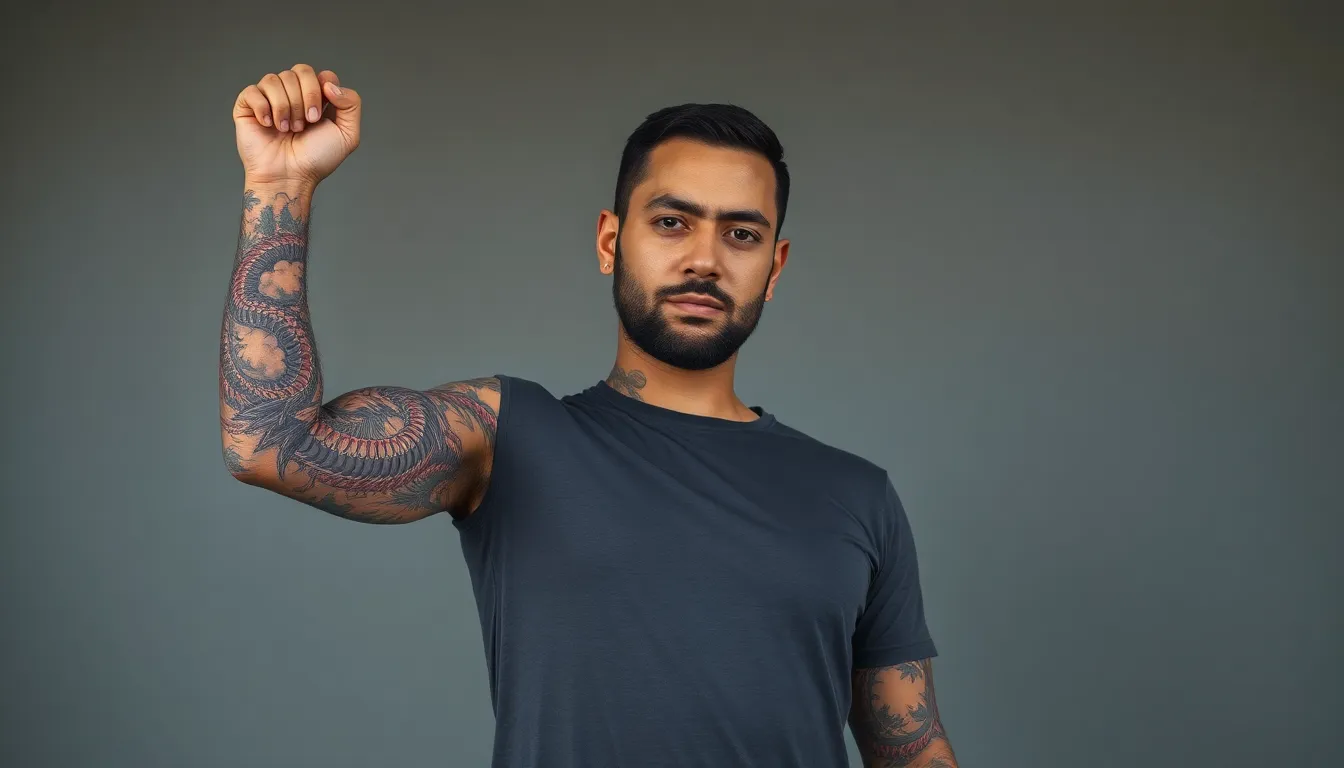
We’ve explored various design styles and techniques, but large-scale cover-ups offer the most comprehensive answers for transforming extensive unwanted tattoos. These expansive designs provide maximum coverage while creating cohesive, striking artwork that completely reimagines your body art.
Full Sleeve Transformations
Full sleeve cover-ups represent the ultimate tattoo transformation, completely concealing arm or leg tattoos beneath new, comprehensive designs. Dragon themed sleeves excel at covering various smaller tattoos by incorporating flowing, serpentine forms that naturally wrap around limbs and disguise underlying artwork.
Nature themed sleeves integrate trees, birds, and clouds into seamless designs that hide unwanted ink beneath organic patterns and natural shading. Forest landscapes work particularly well for cover-ups because dense foliage and complex textures effectively mask previous tattoos while creating depth and visual interest.
Geometric sleeve extensions unify partial arm tattoos into cohesive full sleeves, utilizing angular patterns and negative space to distract from original designs. These mathematical designs create bold, masculine artwork that draws attention away from underlying tattoos through strategic placement and high contrast elements.
Chest and Back Piece Extensions
Chest pieces extend from shoulders down to the abdomen, providing extensive coverage for unwanted chest tattoos through large-scale artistic compositions. Abstract art designs work exceptionally well because their flowing forms and bold shapes naturally conceal underlying artwork while creating visually striking body art.
Celtic patterns offer intricate coverage through interwoven designs that effectively mask existing tattoos with complex knotwork and symbolic elements. These traditional motifs provide masculine appeal while utilizing dense, interconnected patterns that completely transform chest areas.
Back pieces represent ideal answers for covering large tattoos through expansive designs that span the entire back area. Mythological creatures like phoenixes and griffins provide excellent coverage because their wing spans and flowing forms naturally disguise previous artwork beneath detailed feathering and dramatic poses.
Complex landscapes transform back tattoos into scenic artwork, utilizing mountain ranges, cityscapes, and natural vistas to completely reimagine the area. These designs work effectively because they incorporate multiple elements and varied textures that naturally conceal underlying ink.
Leg Sleeve Cover-Up Designs
Leg sleeves mirror arm sleeve techniques, covering entire legs with comprehensive designs that transform unwanted tattoos into cohesive artwork. Zombie apocalypse themes create dramatic cover-ups through detailed scenes that incorporate multiple elements and dark shading to effectively mask previous ink.
Fantasy creature designs work exceptionally well for leg sleeves because their elongated forms naturally follow leg contours while providing extensive coverage. Dragons, serpents, and mythical beasts use flowing shapes and layered details that completely transform leg tattoos.
Detailed cityscapes offer urban themed cover-ups that hide unwanted leg tattoos beneath architectural elements and street scenes. These designs incorporate buildings, vehicles, and urban landscapes that provide comprehensive coverage through varied textures and complex compositions.
Mythical forest themes create enchanting leg sleeves that conceal thigh and calf tattoos beneath magical woodland scenes. These designs use trees, creatures, and mystical elements that naturally blend together, effectively disguising previous artwork while creating cohesive, fantasy inspired body art.
Small and Precise Cover-Up Techniques
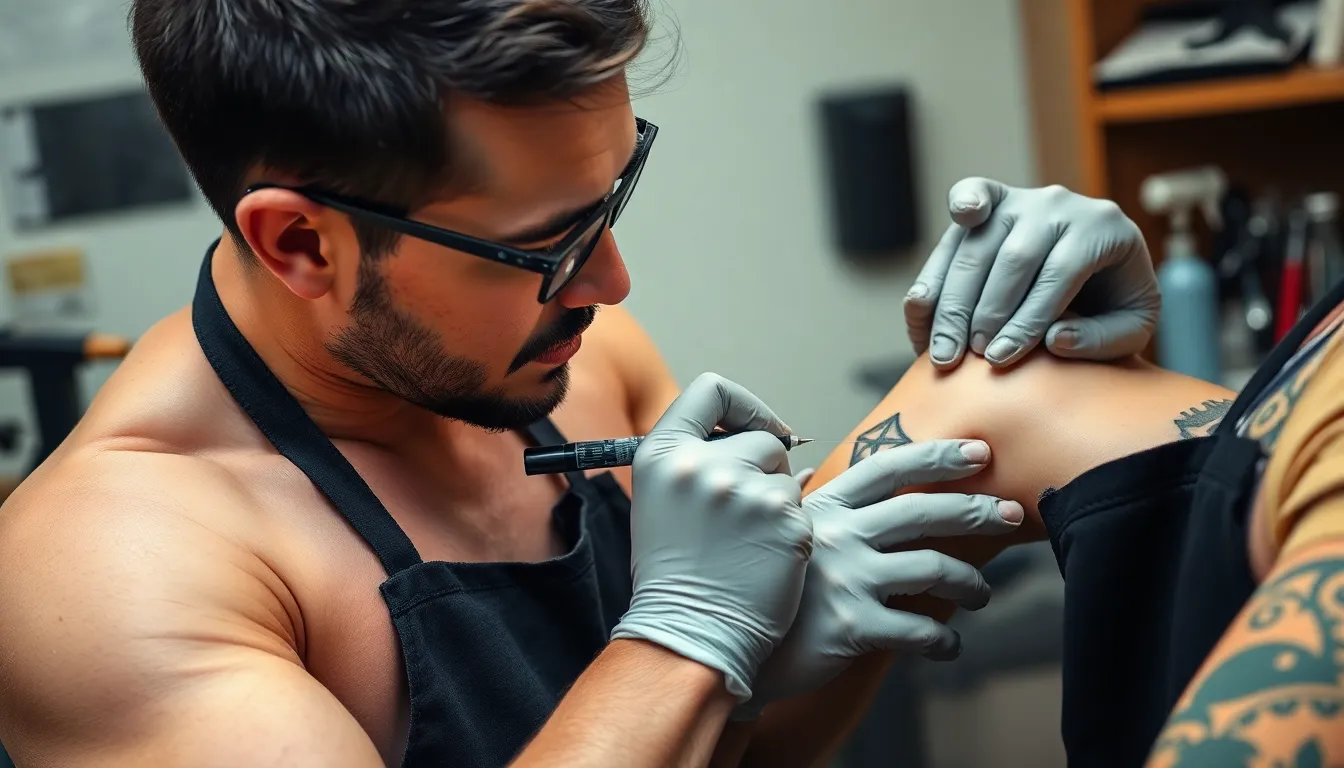
Sometimes we need surgical precision rather than bold statements when covering unwanted tattoos. Delicate techniques excel at transforming regrettable ink without overwhelming your existing body art.
Lettering and Script Overlays
Typography transforms old tattoos through strategic text placement that reshapes the visual narrative. Cursive scripts flow beautifully over faded linework while creating entirely new meanings from forgotten mistakes. Bold sans serif fonts command attention and redirect focus from underlying imagery through their strong geometric presence.
Monogramming offers personalized answers that turn meaningless symbols into meaningful representations of identity. Custom initials blend seamlessly with existing elements while adding sophisticated touches to previously regrettable choices. Decorative flourishes around letters create additional coverage opportunities that enhance the overall design impact.
Quote overlays provide emotional depth while strategically concealing unwanted elements beneath carefully chosen words. Meaningful phrases reshape the entire tattoo’s context and transform negative associations into positive affirmations. Script variations like calligraphy or modern typography adapt to different coverage needs and personal style preferences.
Symbol Integration Methods
Animal overlays breathe new life into tired designs through clever visual integration that makes old tattoos disappear completely. Birds soar across existing linework while snakes weave through previous imagery to create cohesive new compositions. Wildlife silhouettes provide bold coverage options that maintain masculine appeal while concealing regrettable artwork beneath.
Nature elements blend organically with existing tattoos through strategic placement of leaves, flowers, and botanical details. Vine patterns wrap around old symbols while creating flowing connections that unify disparate design elements. Tree branches extend naturally from existing shapes and provide framework for comprehensive coverage answers.
Geometric symbols offer precise coverage through calculated placement of triangles, circles, and angular patterns over unwanted areas. Sacred geometry incorporates spiritual meaning while strategically masking previous mistakes through mathematical precision. Abstract symbols create visual interest and redirect attention from underlying tattoos through bold contrast and intentional design choices.
Minimalist Design Approaches
Simple shapes achieve maximum impact through strategic placement of clean geometric forms over small unwanted tattoos. Triangles create strong focal points while circles provide soft coverage that doesn’t compete with existing body art. Rectangle frames transform random elements into intentional design components through purposeful boundary creation.
Abstract art utilizes bold textures and unexpected color combinations to distract from underlying imagery through visual complexity. Watercolor effects blend seamlessly with existing linework while creating new interpretations of old mistakes. Splatter patterns and organic shapes provide creative coverage answers that maintain artistic integrity.
Dotwork precision employs thousands of carefully placed dots to create intricate patterns that completely overwhelm previous tattoo visibility. Mandala inspired dotwork expands naturally from central points while incorporating existing elements into new geometric compositions. Stippling techniques build density gradually and allow for precise control over coverage areas and visual impact.
Planning Your Cover-Up Tattoo Strategy
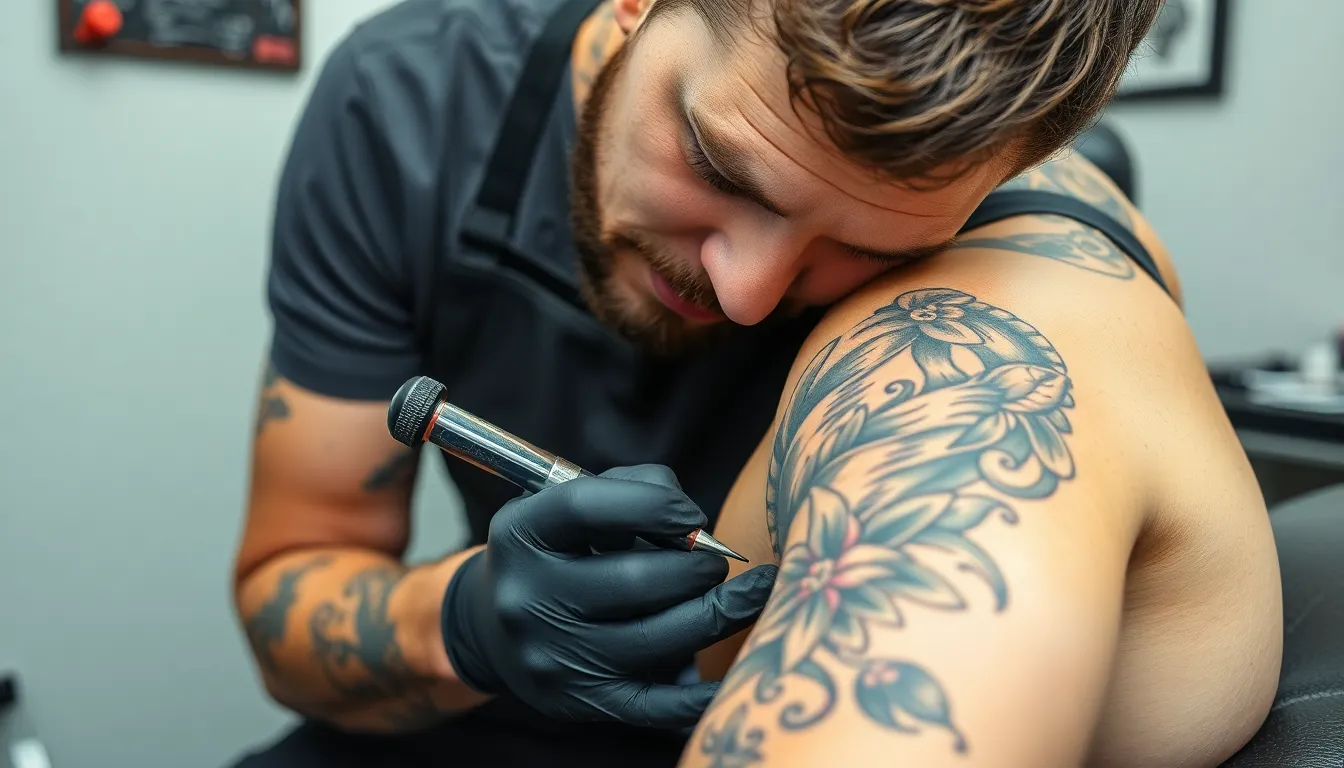
Successfully covering an unwanted tattoo requires careful planning and strategic thinking. We’ll guide you through the essential steps to ensure your cover-up transformation exceeds expectations.
Consulting with Experienced Artists
Finding the right tattoo artist makes all the difference in your cover-up success. Experienced tattoo artists can create custom designs that fit your existing tattoo and personal style, transforming what seems impossible into stunning artwork. We recommend scheduling consultations with multiple artists who specialize in cover-up work, as their expertise varies significantly across different techniques and design approaches.
Research portfolios that showcase successful cover-ups similar to your situation. Artists who’ve mastered cover-up techniques understand how to work with existing ink rather than against it. Many professionals offer design consultations where they’ll photograph your current tattoo and sketch potential answers on the spot.
Feedback loops during the design process ensure your satisfaction with the final concept. We suggest requesting multiple design iterations, as the first concept rarely captures everything you envision. Professional artists welcome this collaborative approach because it leads to better results and happier clients.
Communication about your lifestyle, profession, and personal style helps artists create designs that you’ll love for years. Some artists use digital tools to preview how cover-ups will look on your actual tattoo, providing realistic expectations before you commit.
Color Theory and Design Considerations
Understanding color theory fundamentals transforms your cover-up from mediocre to magnificent. Darker colors can cover lighter ones effectively, but covering bold colors may require multiple layers and strategic planning. We’ve observed that black, deep blues, and rich purples provide the most reliable coverage for existing tattoos.
Size and shape considerations determine which design approaches will work best for your exact situation. Larger tattoos often require designs that incorporate or cleverly disguise the original shape rather than completely hiding it. Artists frequently recommend expanding beyond the original tattoo boundaries to create more design flexibility.
Incorporating elements from the original tattoo into the new design creates seamless transitions. This approach often produces more natural-looking results than attempting complete concealment. For example, transforming a faded rose into part of a larger floral sleeve or converting tribal elements into modern geometric patterns.
Color saturation levels in your existing tattoo affect coverage options significantly. Heavily saturated tattoos may need laser lightening sessions before cover-up work begins, while faded tattoos often accept new pigments more readily.
Budgeting for Cover-Up Work
Cover-up tattoos typically cost more than original tattoos due to their complexity and time requirements. Cost factors include the size and complexity of the design, location on your body, and the artist’s experience level with cover-up techniques. We recommend budgeting 25-50% more than you’d spend on a comparable original tattoo.
Session planning becomes crucial for large cover-ups that may require multiple appointments. Complex cover-ups often need 2-4 sessions spaced 4-6 weeks apart, allowing proper healing between appointments. This extended timeline affects both your budget and schedule planning.
Research pricing among different artists and shops helps you find the best value for your investment. Remember that the cheapest option rarely provides the best results for cover-up work. We suggest comparing artists based on their cover-up portfolios rather than hourly rates alone.
Additional costs may include consultation fees, design deposits, and aftercare products. Some artists offer package deals for multi-session cover-ups, providing cost savings over individual session pricing. Factor in potential touch-up sessions, as cover-ups sometimes require fine-tuning once fully healed.
Conclusion
We’ve explored comprehensive cover-up tattoo options that can transform your unwanted ink into meaningful artwork. From bold geometric patterns and nature-inspired designs to dark gothic themes and traditional styles each approach offers unique advantages for different cover-up scenarios.
The key to successful cover-up work lies in choosing the right artist and design strategy. We recommend consulting with experienced cover-up specialists who understand color theory and can work within your budget constraints.
Remember that cover-up tattoos require patience and investment but the results can be truly groundbreaking. Your old regrets can become powerful statements of personal growth and artistic expression that you’ll proudly wear for years to come.
Frequently Asked Questions
What makes a good cover-up tattoo design for men?
Effective cover-up tattoos for men typically feature bold, dark designs with solid fills and thick lines. Geometric patterns, tribal designs, mandalas, and nature-inspired artwork work exceptionally well. The key is choosing designs that are larger and darker than the original tattoo, allowing the new artwork to completely mask the unwanted ink underneath.
Can any tattoo be covered up?
Most tattoos can be covered up, but success depends on factors like the original tattoo’s size, color, and age. Lighter, faded tattoos are easier to cover than dark, bold designs. Very large or heavily saturated black tattoos may require laser removal sessions before cover-up work, or alternative solutions like blackout sleeves.
How much do cover-up tattoos typically cost?
Cover-up tattoos generally cost 25-50% more than regular tattoos due to their complexity and time requirements. Prices vary based on size, design intricacy, and artist expertise, typically ranging from $200-500 per hour. Additional costs may include consultation fees, design revisions, and specialized aftercare products for optimal healing.
How do I find the right artist for my cover-up tattoo?
Look for artists who specialize in cover-up work and have extensive portfolios showcasing successful transformations. Schedule consultations with multiple artists, review their before-and-after photos, and discuss your specific needs. Choose an artist whose style aligns with your vision and who demonstrates expertise in color theory and design placement.
What tattoo styles work best for covering old ink?
Traditional and neo-traditional styles, blackwork, geometric designs, and realistic nature scenes are highly effective for cover-ups. Japanese traditional irezumi, gothic designs, and intricate dotwork patterns also provide excellent coverage. These styles utilize bold lines, solid fills, and strategic shading to effectively conceal underlying tattoos.
How long does the cover-up tattoo process take?
The timeline varies based on design complexity and size. Simple cover-ups may be completed in one 2-4 hour session, while elaborate pieces could require multiple sessions over several months. Large cover-ups like full sleeves typically need 3-6 sessions, with 4-6 weeks healing time between appointments for optimal results.
Should I consider laser removal before getting a cover-up?
Laser removal isn’t always necessary but can improve cover-up options, especially for dark or heavily saturated tattoos. A few laser sessions can lighten the original tattoo, providing more design flexibility and better final results. Consult with both laser removal specialists and tattoo artists to determine the best approach for your situation.
What should I avoid when planning a cover-up tattoo?
Avoid choosing designs that are too small or light to effectively cover the original tattoo. Don’t rush the planning process or skip consultations with experienced artists. Avoid artists without cover-up experience, and don’t expect perfect recreation of designs that weren’t specifically created for cover-up work. Realistic expectations are crucial for satisfaction.
